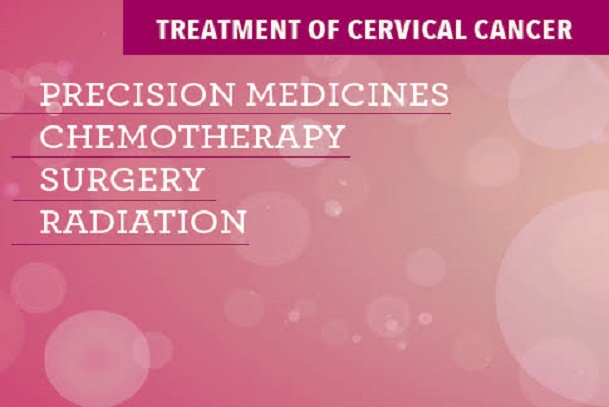 Wash your hands regularly and wear a face mask.
Learn more
Wash your hands regularly and wear a face mask.
Learn more

TREATMENT OF CERVICAL CANCER
Deciding on the kind of treatment depends on several factors, such as the stage of the cancer, as well as age and overall state of health. Treatment for early-stage cervical cancer, when the cancer remains within the cervix, has a good success rate. The further a cancer spreads from its original area, the lower the success rate tends to be.
There are different types of treatment for patients with cervical cancer, by which we have five types of standard treatment which are used. They include:
Although, these treatments for cervical cancer may cause side effects, follow-up tests may be needed.
Surgery
Surgery is a common treatment method when the cancer has not spread from the cervix. It is the removal of the tumor and some surrounding healthy tissue during an operation. A gynecological oncologist is a doctor who specializes in treating gynecologic cancer using surgery.
Radiation Therapy
Radiation therapy is the use of high-energy x-rays or other particles to destroy cancer cells. A doctor who specializes in giving radiation therapy to treat cancer is called a radiation oncologist. Radiation therapy may be given alone, before surgery, or instead of surgery to shrink the tumor.
The most common type of radiation treatment is called external-beam radiation therapy, which is radiation given from a machine outside the body. When radiation treatment is given using implants, it is called internal radiation therapy or brachytherapy. A radiation therapy regimen, or schedule, usually consists of a specific number of treatments given over a set period of time that combines external and internal radiation treatments. This combined approach is the most effective to reduce the chances the cancer will come back, called a recurrence.
Chemotherapy
Chemotherapy is the use of drugs to destroy cancer cells, usually by keeping the cancer cells from growing, dividing, and making more cells.
A chemotherapy regimen, or schedule, usually consists of a specific number of cycles given over a set period of time. A patient may receive 1 drug at a time or a combination of different drugs given at the same time. For women with cervical cancer, chemotherapy is often given in combination with radiation therapy
Targeted Therapy
Targeted therapy is a treatment that targets the cancer’s specific genes, proteins, or the tissue environment that contributes to cancer growth and survival. This type of treatment blocks the growth and spread of cancer cells while limiting damage to healthy cells. Not all tumors have the same targets. To find the most effective treatment, a doctor may run tests to identify the genes, proteins, and other factors in your tumor. This helps to better match each patient with the most effective treatment whenever possible.
Immunotherapy
Immunotherapy, also called biologic therapy, is designed to boost the body's natural defenses to fight the cancer. It uses materials made either by the body or in a laboratory to improve, target, or restore immune system function.
Different types of immunotherapy can cause different side effects. Common side effects include skin reactions, flu-like symptoms, diarrhea, and weight changes.